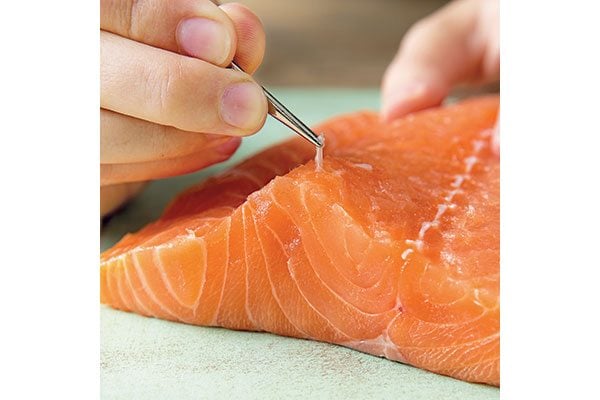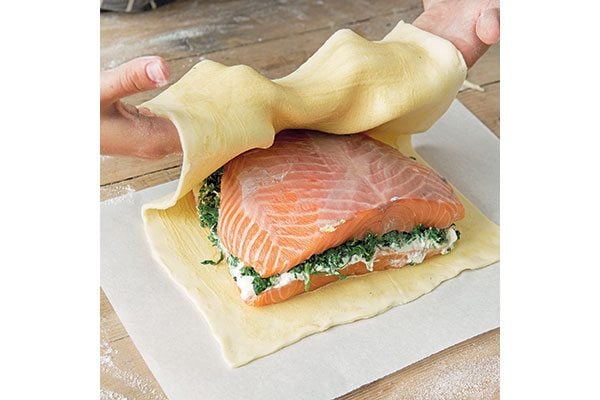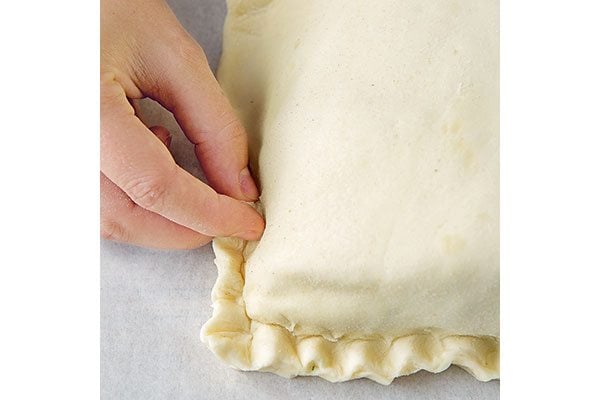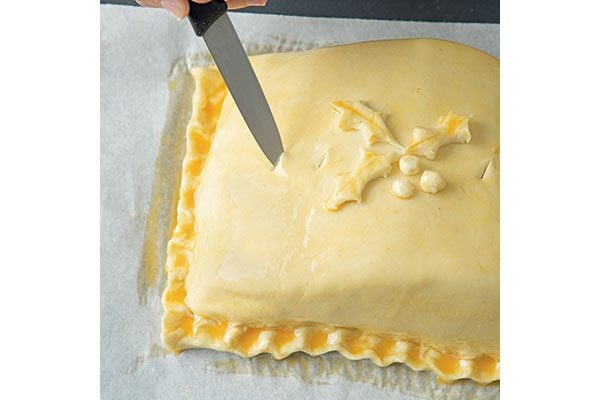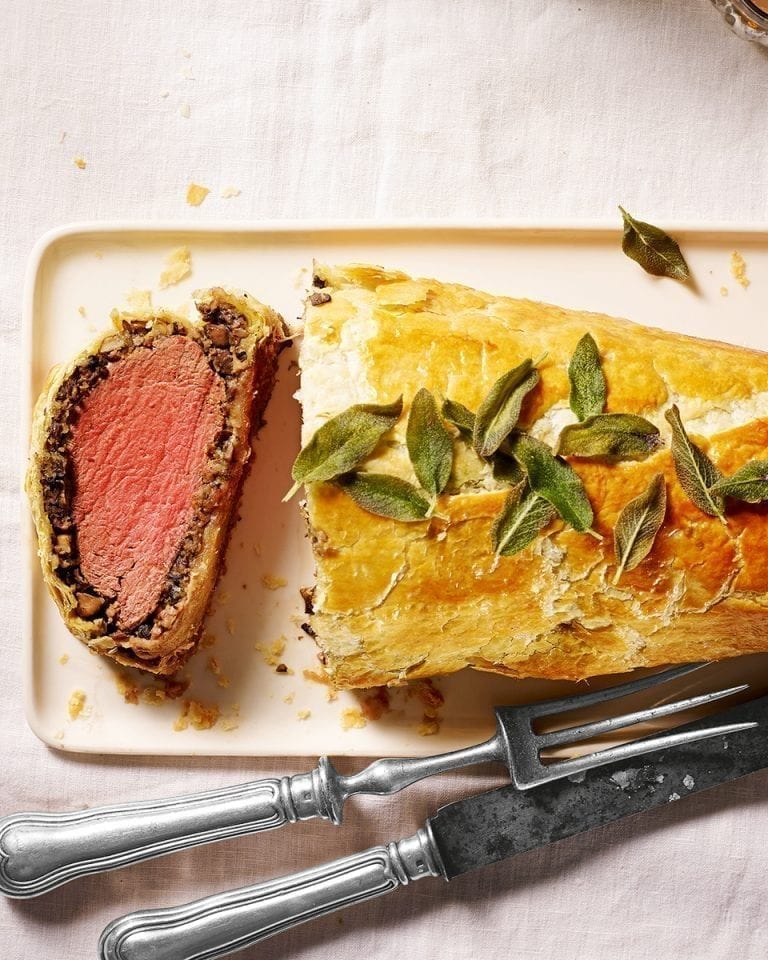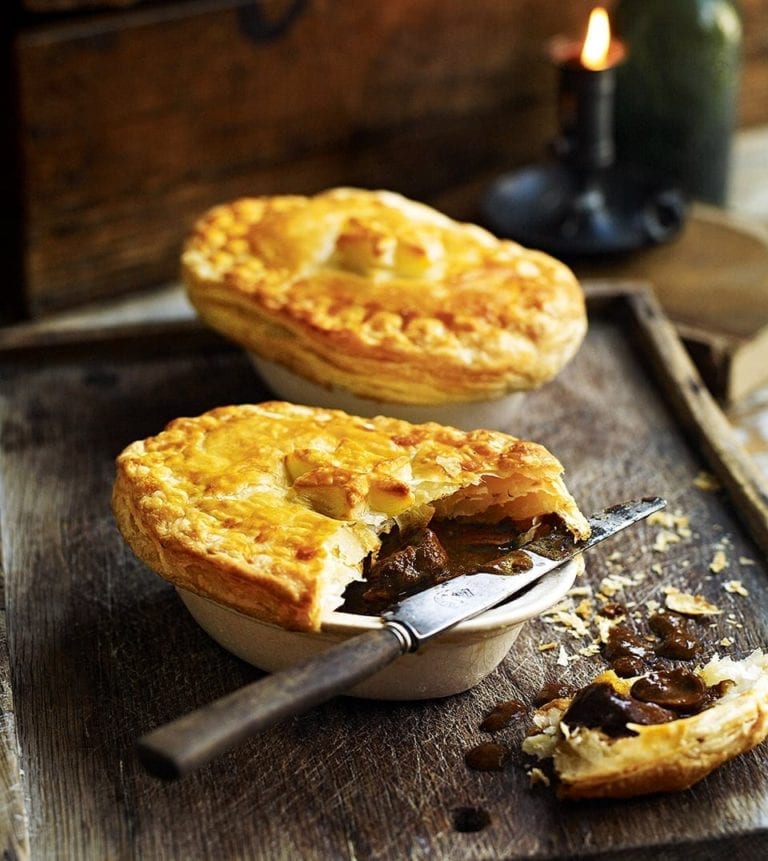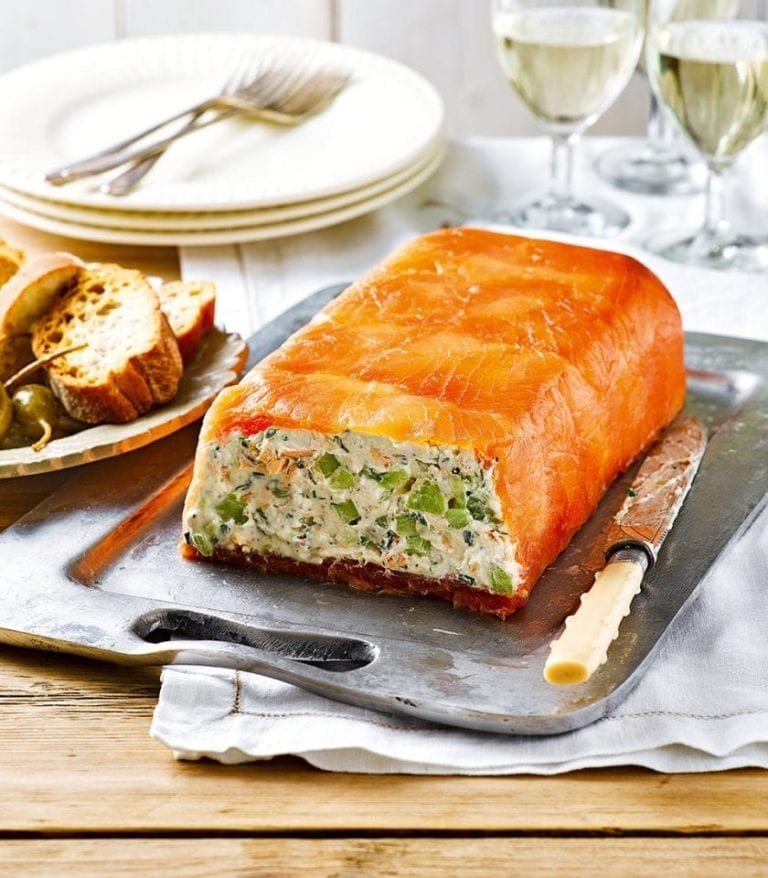How to make salmon en croûte
A salmon centrepiece that can be stress AND fuss free once you know the knack. Follow our step-by-step guide to making salmon en croûte.
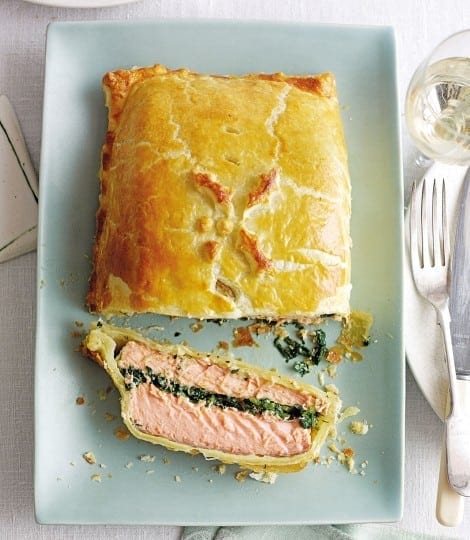
- Heat the butter in a large frying pan over a high heat. Add the garlic and, when it releases its aroma, tip in the spinach and watercress. Stir until the leaves just wilt. Tip into a sieve and press down firmly on the wilted leaves with the back of a wooden spoon to squeeze out as much moisture as you can. Roughly chop, discarding any tough stems, then put in a mixing bowl with the dill and lemon zest. Stir well. Season with salt and pepper.
- Dry the salmon fillets thoroughly on kitchen paper and season them generously. Lay the fillets on a chopping board, skinned-side down, and run your finger down each to check for pin bones.
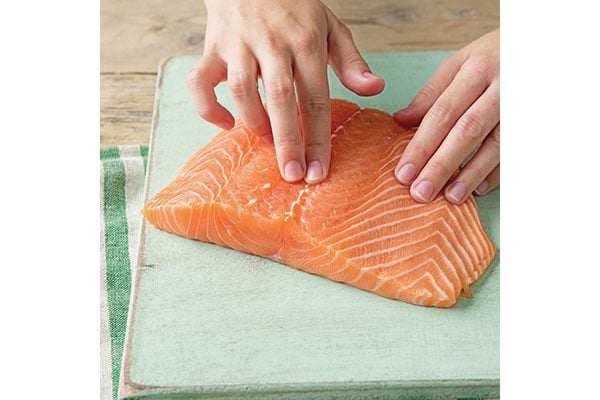
- If you find any, pull them out with tweezers.

- Stir the horseradish into the crème fraîche, then spread evenly over one of the fillets, followed by the spinach mixture. Top with the other fillet, skinned-side up (see How We Cracked It).
- Roll out the pastry on a floured surface to a 3mm thickness and trim to a 27cm x 40cm rectangle (or big enough to leave a generous border around the salmon when folded over). Put on a lined baking sheet and brush with the Dijon mustard. With a short pastry edge facing you, put the stacked salmon fillets across the top half of the pastry, leaving a 2-3cm border. Brush the pastry edges with some of the beaten egg, then fold the bottom half over to cover the fish.

- Trim the edges, crimp them by pinching gently to seal (see tips), then brush with a little more beaten egg.

- Top with decorations made from the pastry trimmings, then brush again with beaten egg. Chill for at least 20 minutes (see Make Ahead). Heat the oven to 200°C/fan180°C/gas 6. 5. Once chilled, make a few small holes in the top of the pastry for the steam to escape, brush with the remaining beaten egg and bake for 25-30 minutes until puffed and golden and a few juices leach out of the holes. Rest for a few minutes before slicing, or leave to cool a little and serve warm.

Tips for success
- You can assemble the dish up to 24 hours in advance and keep, covered with cling film, in the fridge. Bake from chilled. Freeze the unbaked salmon for up to 1 month. Bake straight from frozen, adding an extra 30 minutes to the oven time. Cover with foil if the pastry turns too dark.
- Season the spinach and watercress filling well in step 1 to help distribute flavour throughout the fish as it cooks.
- When wilting the greens (step 1), pull out any thick stems – they can make the finished dish tricky to slice neatly.
- To ensure even thickness, place the fillets so the thin tail end of one fillet sits over the thick end of the other fillet (see How We Cracked It, above).
- When trimming the pastry , use a sharp knife and cut straight down to keep the layers intact and help them puff easily.
- Don’t panic if your crimping isn’t neat. The pastry will puff in a way that makes it look more rustic in style. You don’t have to crimp it – just make sure the edges are well sealed to keep the juices locked in.
- To serve, slice the baked salmon with a sharp, serrated knife, using a gentle sawing motion. This will cut through the pastry, salmon and filling neatly, allowing the pretty layering to be seen clearly.
Click here to see the full recipe
Subscribe to our magazine
Food stories, skills and tested recipes, straight to your door... Enjoy 5 issues for just £5 with our special introductory offer.
Subscribe
Unleash your inner chef
Looking for inspiration? Receive the latest recipes with our newsletter
